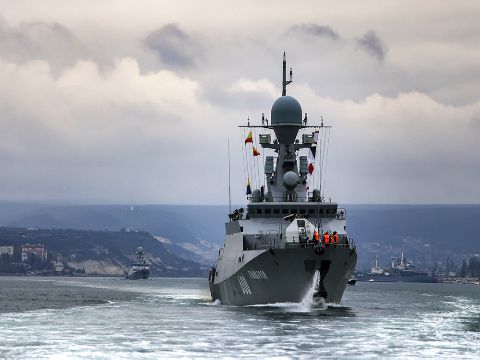Russia has launched an amphibious assault on Ukraine’s Sea of Azov coastline, Pentagon officials confirmed Friday.
The attack is centered to the west of Mariupol and is delivering “thousands” of naval infantry ashore, according to the Pentagon.
“We can’t say with perfect prediction what they’re going to do or where they’re going to go,” the official said.
For the present, Ukrainian troops remain in control of Mariupol itself, but Russian forces are approaching from both the east and the west, Mayor Vadym Boychenko confirmed to Ukrinform.
The region is home to a large ethnic Greek population, and the Greek embassy in Kyiv has encouraged citizens and individuals of Greek descent to depart.
In the first 24 hours of the invasion, the Russian Navy played a limited role in the conflict. Its forces seized a small but strategic border post on an island off Ukraine’s coast yesterday, and it has provided supporting fire for shoreside forces and attacked several neutral merchant vessels, but Friday was the first time that it engaged in direct combat with larger Ukrainian military units.
The Black Sea Fleet fielded 10 tank landing ships for the operation, including six transferred from the Baltic and Northern Fleets before the onset of hostilities. Each can carry up to 25 armored personnel carriers or up to 10 main battle tanks, and can land forces directly onto an unprepared beach.
The distance from Mariupol to Russian force concentrations in Russian-held territory is relatively short, on the order of 75-100 nautical miles, raising the possibility of multiple landing runs to the beachhead if required over the course of the next several days.
On Thursday, Ukraine formally asked the government of Turkey to close the Bosporus to Russian Navy warships due to the ongoing hostilities. Under the Montreux Convention, Turkey administers the waterway and may close it to combatants in time of war.
On Friday, Turkey’s foreign ministry said that it has decided that the Convention does not allow it to close the Bosporus to Russian vessels returning to their home ports – only to close it to vessels outbound for the Mediterranean.
This would allow any Sebastopol-homeported Russian warships to transit back through the strait and into the Black Sea, effectively negating any formal closure.


